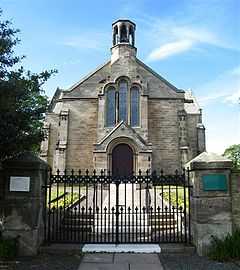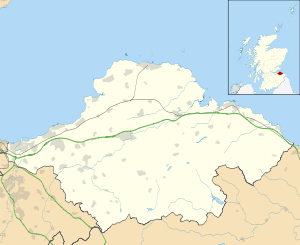Gladsmuir
| Gladsmuir | |
 Gladsmuir Parish Church |
|
 Gladsmuir |
|
| OS grid reference | NT457732 |
|---|---|
| Civil parish | Gladsmuir |
| Council area | East Lothian |
| Lieutenancy area | East Lothian |
| Country | Scotland |
| Sovereign state | United Kingdom |
| Post town | TRANENT |
| Postcode district | EH33 |
| Dialling code | 01875 |
| Police | Scottish |
| Fire | Scottish |
| Ambulance | Scottish |
| EU Parliament | Scotland |
| UK Parliament | East Lothian |
| Scottish Parliament | East Lothian |
Coordinates: 55°56′56″N 2°52′05″W / 55.949°N 2.868°W
Gladsmuir is a village and parish in East Lothian, Scotland, situated on the A199 and near Tranent and Prestonpans.
Description
The name Gladsmuir stems from the Scots word gled, meaning a bird of prey, (usually a buzzard), combined with muir; the Scots form of moor, thus Buzzard's Moor might loosely translate Gladsmuir into English.
Gladsmuir's principal "claim to fame" relates to its role as the site of the Battle of Prestonpans (1745). Some sources - particularly maps - occasionally refer to the confrontation as the Battle of Gladsmuir. The Jacobite poet William Hamilton (1704-1754) wrote a poem entitled Gladsmuir in celebration of the battle.
The philanthropist George Heriot, jeweller to James VI, King of Scots and founder of Heriot's Hospital, (later George Heriot's School), in Edinburgh, was born in Gladsmuir.
Gladsmuir Parish Kirk is a Romanesque cruciform church dating from 1839 and designed by William Burn. A replacement was built after a fire in 1886 by John Farquarson of Haddington with later improvements made in 1929. The older ruined kirk can still be seen and explored behind the new kirk. The graveyard contains several CWGC graves from both world wars.
Photo gallery
-

Gladsmuir Kirk
-

New Kirk gargoyle
-

Tombstone detail
-

The Old School House
-

Old Kirk
-

Old Kirk
-

Ruined belltower
-

The Auld Kirk
-

Church with snow January 2010
References
- East Lothian Council document about Gladsmuir
- Statistical accounts for Gladsmuir
- "A Vision of Britain" web page about Gladsmuir
External links
| Wikimedia Commons has media related to Gladsmuir. |